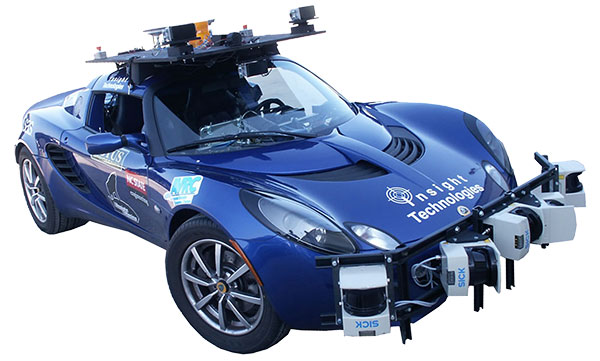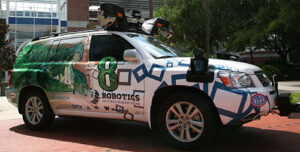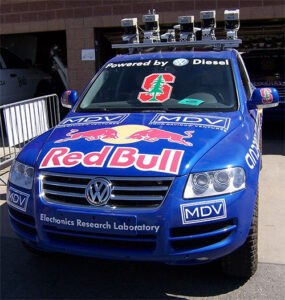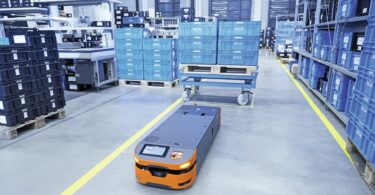Predictions from the Past
In the 1980s hit movie series Back to the Future, lead character Marty McFly captivated movie goers with action-filled scenes that brought the future to life. Due to the toils of a quirky, but genius inventor named Dr. Emmett “Doc” Brown, McFly was able to travel through time…to the year 2015. Less than a year from now!
In 2015, the movie depicted skateboard-like objects that “hovered” just above the ground, and flying cars as common modes of transportation. In the 80s, these alternative modes of transportation seemed far-fetched. Yet, as we inch closer to the actual 2015, it is clear that our world isn't so different from the one that filmmakers imagined more than 20 years ago.
Self Driving Cars and Drones – On Track for the Next Decade
While hoverboards and George Jetson-like vehicles won't be overtaking our skies any time soon, nor will we be able to travel through time, self driving vehicles may be passing you on the highways sooner than you might think. By 2020, some experts say the technology will be so advanced that cars will be able to steer and change lanes completely on their own.
In a recent CNBC article, Raj Rajkumar, professor of electrical engineering at Carnegie Mellon University says “In 2003, if you'd have said that someday we'd see self-driving cars, you would have been labeled ‘insane.'” A little more than a decade later, the idea isn't so crazy anymore. Most major automotive manufacturers are now on board. General Motors, BMW, Mercedes-Benz, Nissan, and others have all declared they have been working on making autonomous vehicles a reality.
On its web site, GM states that its new “Super Cruise Control,” will enable vehicles to steer themselves once a certain speed has been reached.
BMW also recently showcased its own autonomous vehicle at the 2014 Consumer Electronics Show (CES). In a recent USA Today article, the new “ActiveAssist” technology is described in more detail. According to BMW, vehicles with ActiveAssist are able to maneuver difficult road conditions with precision (check out this BMW video to see the self driving car in action).
But car manufacturers aren't the only companies making significant advances in the world of unmanned transportation. According to Amazon, the giant online retailer, they are in the process of developing a drone that will be used to fulfill orders and drop purchases at customers' homes in 30 minutes or less via “Amazon Prime Air.” Check out this Amazon Prime Air test flight from their web site. However, there are still several safety and aviation regulation details to sort through before it is launched.
The Technology Behind the Innovation
Advancements in autonomous vehicles have been made possible due to intelligent technologies, including cameras, sensors, GPS and laser scanners.
SICK's LMS 2D laser scanners, for example, use laser radar technology (LIDAR) to help guide off-road and industrial vehicles. The distance between the scanner and object is determined using the time-of-flight principle. The distance is calculated based on the amount of time it takes for the laser scanner's emitted light pulse to reach the object and return to the scanner. If it senses an object in its path, then the LMS triggers an output to avoid a collision.
 And while LMSs are not being used on consumer automobiles, they have been used to guide vehicles in past DARPA Challenges, a series of autonomous vehicle races sponsored by the Department of Defense. SICK's LMSs are able to detect objects in a vehicle's path to avoid collisions. And, with a 190° scanning range, these laser scanners provide reliable detection over a large area.
And while LMSs are not being used on consumer automobiles, they have been used to guide vehicles in past DARPA Challenges, a series of autonomous vehicle races sponsored by the Department of Defense. SICK's LMSs are able to detect objects in a vehicle's path to avoid collisions. And, with a 190° scanning range, these laser scanners provide reliable detection over a large area.
Since safety and reliability are two of the biggest concerns surrounding autonomous vehicles, these types of technologies are critical for making self driving vehicles a reality. Find out more information about SICK's 2D laser scanners.
What does all of this mean for YOU?
While completely autonomous vehicles are still years away, these new technological advancements may forever change how vehicles are built and operated. Current drivers will not only need to learn how to adjust to these new features, but driver's education curriculums may need to change as well.
Will these innovations give individuals who were previously unable to sit in the driver's seat — due to disabilities or other limitations — the chance to get behind the wheel? Will roadways become safer with technology literally driving people from one destination to the next? Will all of our infrastructure need to be redeveloped — from stoplights to tollways — to meet changing technological needs?
There are clearly many unknowns regarding this technology and how it will be used in the future.
And, while you may not be familiar with self driving vehicles or the technology behind them, you will no doubt notice some major transformations taking place in the transportation industry. Soon, these changes will be coming to a highway (or sky) near you.





